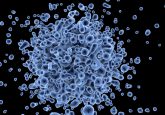FAIRY: a rapid, cell-free assay for determining virus infectivity

A research group led by Samuel Jones from the University of Birmingham and the University of Manchester (both UK) has developed a cell-free, plate-based assay to determine whether a virus is infectious or non-infectious. This new method was published in Biomacromolecules.
Approximately two-thirds of all identified human pathogens are attributed to viruses and viruses are becoming widely used as delivery agents for vaccines and gene therapies. Determining the infectivity of a virus is crucial and various research methods, such as infectivity assays and PCR, are commonly used to evaluate the presence of viruses.
Infectivity assays are considered the gold standard method for assessing viral infectivity. However, performing these assays can be time-consuming and special expertise is needed for their execution. Moreover, these assays rely on a cultivatable cell line, which may not be accessible for all virus types. PCR can determine the quantity of DNA or RNA in a sample, correlating with the number of virions present; however, measuring viral titers does not confirm the existence of infectious virions.
The research team unveiled a high-throughput and dependable cell-free technique called FAIRY, which can differentiate between intact and nonintact virus capsids, offering insights into virus infectivity. Viruses with intact capsids are infectious, whereas those with disrupted or nonintact capsids are noninfectious.
“On average, every four years a new virus is discovered that has pandemic potential, and there are many more already known viruses that could cross the species barrier. Yet to [the] best of our knowledge there is currently no assay capable of identifying whether a sample contains intact or non-intact viruses, and therefore shows whether it is infectious or non-infectious, without cell cultivation that could take weeks”, explained Jones.
FAIRY employs a dye that typically enters viruses through pores in the capsid. This dye is modified and conjugated to a larger polymer to hinder its entry into the capsid pores. The dye produces a fluorescent signal upon binding to the viral DNA or RNA. This assay indicates whether the virus is intact and thus infectious in minutes. The group has already tested FAIRY using different virus samples including herpes simplex virus (HSV-2) and respiratory syncytial virus (RSV), among others. The results were optimal, confirming the reliability of FAIRY.
You may also be interested in:
- Solving a puzzle in humoral response – the difference between allergy and infection
- Paper strip test using CRISPR and SHINE technology has been developed for rapid influenza diagnosis
- Do your AAVs contain DNA?
This method will provide rapid quality control in the production of viral vectors for gene therapies and vaccines. It will become a valuable tool for research on viral integrity, aiding in the development of new disinfectants, antiviral surfaces and screening for antivirals.
“This simple, low-cost assay uses ready-made consumables and can rapidly screen multiple disinfectants and viruses in a single microplate assay, for their ability to neutralize viral infectivity. It could have screened every disinfectant for antiviral activity during the SARS-CoV-2 pandemic and so deliver a more rapid response during the next pandemic,” concluded Jones.





